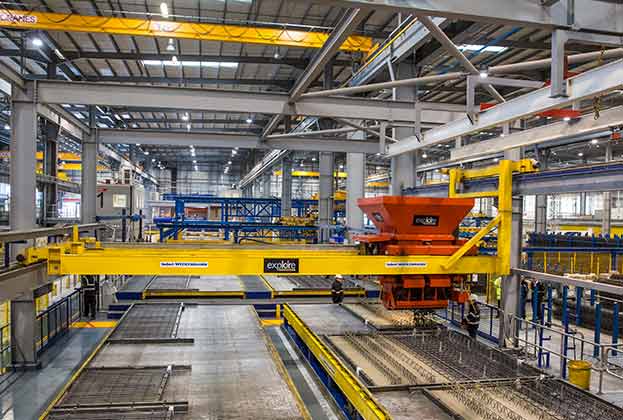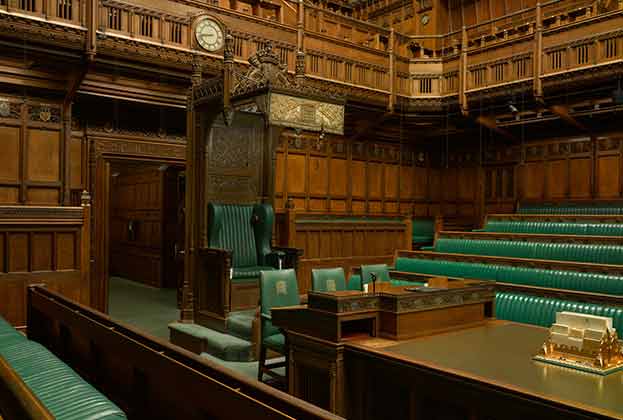In a world of slowing sales and house price inflation, housebuilders need to consider new sources to finance future developments
If individual households cannot afford new build homes, housebuilders must look for buyers who can. In our opinion, in 10 years, their customer lists will see pension funds and life insurers alongside first-time buyers and second steppers. The specification and design of new homes must change to match, as must the way housebuilders secure land.
The rise of institutional investors
There is strong demand from institutional investors, such as pension funds, to invest in homes for the rental market. The long-term, inflation-linked income from rental properties is a strong match for funds with similarly structured liabilities. These longterm landlords have different requirements from individual investors, however, which will affect the design and specification they demand from the homes they buy.
Operating over long timescales with a relatively low cost of capital, these institutions are willing to pay extra for a more durable fit-out, as they save on their maintenance spend in the long term. Reduction of management costs is a key goal, so building homes with high energy efficiency and to a consistent design – perhaps using modular construction – will help attract these investors.
By securing funding for 10s or 100s of homes in advance, housebuilders can cut their costs on marketing, sales, procurement and finances
Savills Research
The value of a discount
As well as differences in specification, housebuilders must also consider the different cash-flow profile when selling homes in bulk to investors. Inevitably, these large-scale investors will expect a bulk discount relative to individual home buyers. However, by securing funding for many tens or hundreds of homes in advance, housebuilders can cut their costs on marketing, sales, procurement and finance. These cost savings, as well as the reduction in sales risk, mean accepting a discount can often be worthwhile.
In March 2019, Telford Homes announced a deal with Invesco and M&G which gives those investors first refusal on its new developments. That guarantees a pipeline of new homes for Invesco and M&G to operate for rent, but it also gives Telford greater certainty. While Telford’s profit margins have decreased, this deal means the housebuilder can spend less time and cash on marketing, sales costs, and development finance, while reducing its exposure to risk.
Changing role of housebuilders

Future profits for housebuilders may be smaller, but less exposed to market cycles
Build to Rent made up 7.1% of housing projects started in the year to Q1 2019. As bulk sales to investors grow their share of housing delivery, the role of the housebuilder will change. Rather than shouldering the full burden of risk, housebuilders will act as master contractors, forging long-term partnerships with landowners and investors. In the future, their profits may be smaller, but they will also be more resilient and sustainable.
Discounted bulk sales to investors are a relatively new phenomenon. Until recently, housebuilders have had no need to accept a discount, with ample demand from owner-occupiers fuelled by the availability of mortgage finance.
Falling interest rates and tightening lenders’ margins have driven house price inflation far higher than wage growth. Between 1997 and 2018, average wages in the UK rose 71%. House prices grew 242% over the same period.
Now the stress tests introduced in the Mortgage Market Review in 2014 are starting to bite. Mortgage affordability is increasingly constrained and residential transactions have slowed. However, with government support, new home sales have continued to rise.
The end of Help to Buy
The Help to Buy equity loan has helped new home sales stand up while the rest of the market slows. Housing delivery grew 90% from 134,000 in 2012/13, when the scheme was introduced, to 255,000 new homes in the year to June 2019. The number of households entering home ownership for the first time has increased, too, with 150,000 using Help to Buy to take their first step on to the ladder. However, this support may not be around much longer.
From April 2021, Help to Buy will face restrictions, limiting the scheme to first-time buyers and imposing lower property value caps in regions outside London. Our analysis of Help to Buy loans granted in the year to June 2018 suggests that 17,000 sales, 34% of the total, would have been prevented by these restrictions. Housebuilders may be able to mitigate these impacts by building more modest, lower-value homes that are more affordable for first-time buyers and fall under the new value caps.
However, government has also announced it intends to end Help to Buy entirely in March 2023. Whether we see this delayed or adjusted, Help to Buy cannot reasonably support more than a third of all private new home sales forever. If individual households cannot afford new homes, developers must look to institutional investors as part of the solution to fill the gap in demand.
Shifting paradigm
Falling yields and interest rates have helped support capital value growth across a range of asset classes, not just housing. Now, with global gilt yields hovering around zero, the paradigm has shifted. House price growth over the coming years will be slower than we have seen previously, constrained by affordability. Our last forecast for UK annual house price growth was 2.7% on average over the next five years, compared with 6.5% over the past 10 years on average.
This increases risks when buying land. Before, if a housebuilder paid too much for its land, it could count on house price inflation to help bail it out. With house price growth slowing, this safety net has fallen away. In turn, this makes development debt riskier, pushing up finance costs and making it even harder to sell new homes profitably.
The government may help sustain values and support households buying new build for now. In the longer term, housebuilders will have to consider the institutions which have the money to buy their homes when securing land and designing their product.
Read the articles within Spotlight: Disruption in development below.
.jpg)


